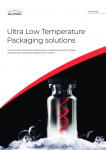State of the Industry: What readers have to say

The report covers topics such as market conditions and investments, as well as partnering trends and challenges.
View: State of the global pharmaceutical contract services industry 2018
The majority of respondents (78%) said they feel more positive about the future of their company than a year ago. Conversely, 24% of respondents strongly agreed that the political environment is creating challenges for the industry, yet nearly one third strongly disagreed that increasing negative news is causing challenges.
More than half agreed that industry initiatives will lead to transparency and boost consumer confidence. This, as regulations have been changing across the globe with patients, the scientific community, and other stakeholders calling for increased clinical trial data transparency.
As part of this, earlier this year the US Food and Drug Administration (FDA) launched a new pilot program aimed at increasing transparency.
Supply and demand
North America and Western Europe emerged as the top two most important markets for both pharmaceutical companies and suppliers. Superseding Japan this year, though narrowly, China was cited by nearly one-third of respondents. Given the option to select three top markets, only 8% of respondents chose Africa.
Survey respondents were divided on their opinions of industry capacity, with 41% believing the industry has neither too much nor too little capacity and a similar percentage (39%) feeling the industry does not have enough capacity.
As per M&A activity, fewer than half of respondents expect their company to make an acquisition in the next year, though a similar percentage said key acquisitions were made in the last year. Approximately half expect more capital investment will be made this year than the year previous and three quarters expect profit margins to improve over the next year.
When asked what they considered to be key growth drivers for their company over the next year, respondents most often cited emerging markets, a strong economic environment, and developed markets. Compared to the previous year, “strong economic environment” became the second most cited driver, up from fifth.
Trials and tribulations
Responses were across the board as it pertains to the top drivers of complexity in clinical trials.
Approximately one third said regulatory changes, followed by sponsor/CRO relationship management – though only 6% selected eClinical technologies, such as CTMS (clinical trial management systems), EDC (electronic data capture), and ePRO (electronic patient-reported outcomes) as a driver of complexity.
Twenty-four percent said inclusion and exclusion criteria, as the number and complexity have increased substantially over the last 30 years, a challenge recently examined in a Tufts report.
Per the report, the rapid increase of protocol complexity is contributing to clinical trial delays and inefficiencies. Notably, drug makers doubled the number of countries and increased the number of investigative sites by 63% to support Phase III protocols from 2001-05 to 2011-15. This, while the mean number of patients declined 18%.
Patient recruitment remains the biggest challenge of conducting clinical trials. When asked to choose the top three challenges, data accuracy was cited the least often. Timeline concerns also continue to present challenges, with on-time delivery and study start-up following second and third, respectively, as the most cited.
Good clinical practice
ICH E6 (R2) modernizes the International Council for Harmonization (ICH) Good Clinical Practice (GCP) Guideline, which was implemented more than 20 years ago.
ICH released ICH E6 (R2) to encourage new approaches to clinical trial design, conduct, and oversight. Its requirements affect sponsors, CROs, and clinical trial sites.
More than a third of respondents agreed that their company is prepared to address the requirements, though 29% said they were not aware of the requirements.
The updated guidance specifically addresses electronic records and essential document flow, with the intent to increase quality and efficiency.
When asked if document flow to clinical trial sites had sufficient oversight and accountability for compliance and quality, half of the survey respondents agreed, though nearly one third felt neutral and 9% disagreed.
Additionally, as the industry works to move from paper-based process to digital, nearly one-third of respondents said their company manages their trial master file (TMF) transfer process via real-time electronic transfer (ETMF).
Only 11% said the survey respondents said they use manual, paper-based processes, though 38% weren’t sure how their company was managing the process.
For those respondents using eTMF, one third said they experience better visibility into performance metrics. Only 10% of respondents said they experience cost savings and shorten timelines. Yet, for those using manual or hybrid processes, 63% said the main challenge is compliance.


























